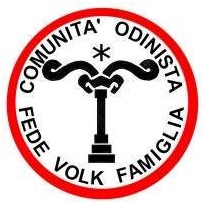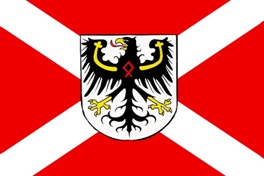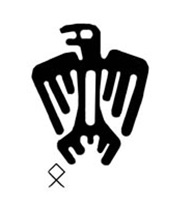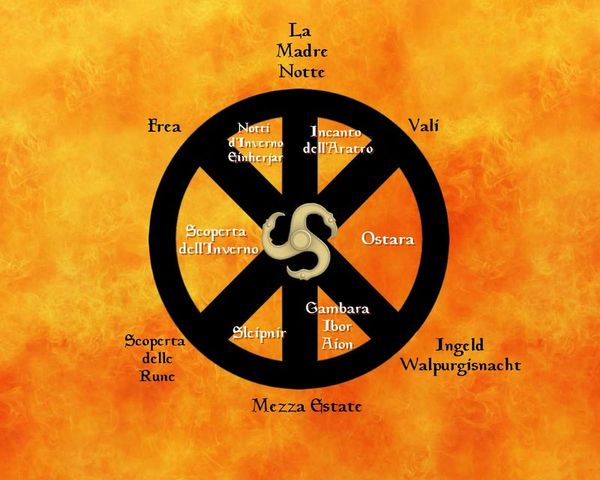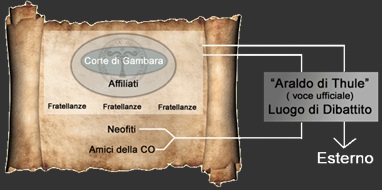Scheda per WRSPhttps://wrldrels.org/2018/07/11/comunita-odinista/*^*^*^*^*^*^*^*^*^*^*^*^*^*^*
COMUNITŔ ODINISTA
TIMELINE
1968 (March 21): Hundingr-Gisulf was born as Pier Paolo Gauna in Aosta, Italy. 1994 (August): Hundingr-Gisulf founded the Comunitŕ Odinista during a journey in Iceland. He did it in the wake of the english Odinic Rite and the belgian magazine Megin (publied by the group “Fils des Ases”). In the same year he started the magazine Araldo di Thule that was linked to the CO and their principles. 1995: Hundingr-Gisulf met Gualtiero Cěola (7 june 1925 – 4 november 2000), called Walto Hari or Volksvater, father of the folk, by the others faithfuls of the CO. He was very interested in the history of Northern Italy and Germany, and especially in the religion and culture of Longobards, a germanic people who settled in Italy in the 568 d.C.. Since the 1995 he wrote many articles for the Araldo di Thule. The CO received a visit from a viennese member of the Armanen orden and after that they decided to celebrate their first rites, called blňtar, in Piedmont and Valle d'Aosta. They also codified the monthly celebrations with the publication of the langbärte calendar and the book of proto-rituals “I fuochi di Gambara” (“The Gambara’s Fires”). In this period most of the members were from Piedmont and Veneto. 1997: The Hermandad Ásatrú Argentina, a group of descendants of Northern italian immigrants located in Buenos Aires, contacted the CO. They decided to cooperate and created the Alleanza del Lupo/Alianza del Lobo/Wolf’s Alliance. 1998: Since this year some CO's members have performed ritual and blótar with the english group Odinic Rite. 2000: The Hermandad Ásatrú Argentina ceased to exist and the CO renounced to organize odinist groups outside the territory of Northern Italy and decided to manage their italian brotherhoods in a more centralized way. 2010: The access to the community was made more structured and it was divided into stages to guide the personal growth of the individual. FOUNDER/GROUP HISTORY The CO was inspired by the germanic mysticism leaded by the occultists Guido Von List (5 October 1848 – 17 May 1919 ) but also the First Anglecyn Church of Odin, founded in Melbourne by Alexander Rudd-Mills (1885-1967) that was operative from 1929 to 1942. The CO was strongly influenced also by the Danish founder of the “Odinist Fellowship” Else Christensen (know as “the Folk Mother”), and the group Odinic Rite. Hundingr-Gisulf founded the CO in 1994 during a trip in Iceland, organizing young people from Piedmont, Valle d'Aosta, Lombardy and Veneto. He chose this country, symbolically, because it was one of the last in Europe to convert to Christianity (with non connections with the local Asatruar). After the foundation, inside the CO, he took the name Hundingr Gisulf and he became the Gođi, “priest” of the community. Hundingr-Gisulf joined the traditional Odinism but he was particularly focused on the longobard tribal heritage, his aim was to restore the faith into the ancient gods of the longobard folk. Because of that the ancient Langbard (Lombard Kingdom), that nowadays matches with the North Italian region, was very important in CO's concepts. Concerning that, the meeting between Hundingr-Gisulf and Gualtiero Cěola in 1995 was a decisive moment. Cěola studied for years the longobardic traditions of Northern Italy and published in 1987 Noi, Celti e Longobardi, a book that strongly inspired Hundingr Gisulf. After the 1995 Cěola supported directly the CO and wrote a lot of articles for the magazine l’Araldo di Thule. In the 1997 they established some link with international groups, like the Alianza del Lobo and inspired the Comunitŕ Odinista América, the Comunitŕ Odinista Australia and Comunitŕ Odinista Vinland to bring together the longobard heirs settled out of North Italy, in fact these groups have never really been operational. Currently, they are maintaining very good relationships with the Odinic Rite.
DOCTRINES/BELIEFS The CO's beliefes are different from the doctrines of other nordic pagan movements. They consider themselves as heir of a precise ancient ethnic group, the Longobards or Lombards, a germanic people who arrived in present-day Italy in the VI century, but they feel themselves also connected to other population part of the Celtic cisalpine substratum of North Italy (described as “teutonic folks”) like cisalpine Celtic tribes and Cimbrians that were very near to the germanic traditions. The total acceptance of folkish Odinism, even as a definition, reflects an openness towards a broad Germanic and European tradition. For these reasons they define their faith as ethnocentric, the religion for them is a union of peoples based on ethnicity (not just in a purely biological sense) , to join the community is necessary to be from the territory, or from similar European regions, and have a natural and healthy way of life. This approach has been defined as geneticist by scholars but, in fact, genetics is not a sufficient condition to belong to the CO. The ethnocentrism of the CO is understood and proposed without any supremacist or racist connotation, but according to a tribal logic, also common to other non-European peoples, as well as in Native American tribes. In this sense they define themselves as a popular, or better, folkish movement. They reject any universalism, typical of some neo-pagan groups, and their aim is the awakening of the ancient longobardic spiritual and cultural heritage on their land, Langbard, contraction of the term Langbardland.
For the CO's perspective the blood, the ethnic identity is equivalent to the spiritual essence (these two elements are indissoluble and can not be defined by a mere "biological purity") Their life is based on the adherence to these three principles: Faith, Folk and Family, and they must act according to the following Nine Noble Virtues ( the so-called NNV of Odinism, codified by Odinic Rite members John Yeowell a.k.a. Stubba and John Gibbs-Bailey a.k.a. Hoskuld in 1974): Courage, Truth, Honour, Loyalty, Discipline, Hospitality, Self-Reliance, Industriousness and Perseverance, as well as the Nine Charges (that were codified by the Odinic Rite in the 1970s). In the CO perspective there is also an other sacred nation, but without geographical boundaries, the Nation of Odin, a sacred homeland for the people who share the same ethnic and spiritual origins (folkish roots). Another significant symbol for them is the Raven Banner with the rune Othala, of which we have already said. This raven is strongly connected with the god Odin/Godan. The flag underlines the common spiritual origin and the preservarion of the land of their ancestors.
RITUALS/PRACTICES Rituals and celebrations are foundamental in the life of the community. The CO uses the ancient word blótar (sing. blót), to indicate rituals in which they provides offerings to the gods. In the past these performances usually consisted in animal sacrifices, instead they currently strongly refuse animal immolations (in the CO it is very important to pay attention to the rights and protection of all kinds of animals, various members are vegetarians and there is an ecological-traditional approach to life that reflects the spiritual and religious values of the community). The CO established in the 1995 the langbärte calendar, the monthly celebrations based on the circle of the year, studing the ancient sources and the germanic agricultural calendar.
Other kind of rituals performed by the CO are the thing. These are meetings in which the internal organization of the group and the external activities are discussed and regulated. Rituals do not seek any "historical re-enactment", as well as a pure academic and philological research: Odinist faith is intended as a valid and current answer, evolved towards the needs of 21st century people, integrated and productive, even with a traditional training. ORGANIZATION/LEADERSHIP Over time the community has not defined itself in a strongly hierarchical sense, but has structured itself trying to favor the sharing of constructive contributions by each member. The Corte di Gambara (Gambara’s court, referred to the name of the mythical priestess and leader of the ancient Lombards) is the governing council of the CO. It establishes and organises the blótar and the thing and all the other performances. It also deals with the formation of the invocators, Gothar, (sing. Gothi) and deliberates on the admission of new members The official CO magazine L’Araldo di Thule( Thule herald) , as well as the calendar are items reserved for members as training tools. Since May 2007 an online forum is available (Forum Odinista) in which discussions are available and reserved for members of the CO only.
Hundingr-Gisulf, the founder, still plays the role of Gođi (invocator, priest) and he has the title of Gothi of the whole community, so, during the rituals, he is the invocator of all the People. In 2017 he left the direct management of CO to devote himself to meditation and study to contribute to the Comunitŕ Odinista corpus, leaving "the honor and privilege” of the organization of the C.O. to the Corte di Gambara. ISSUES/CHALLENGES The CO usually avoid direct propaganda towards ordinary people, they are not interested in proselytism and in increasing their numbers. Their focus is on the community as a family and on their spiritual heritage that must be preserved and passed on to the descendants. They do not share the universalistic, syncretic or ideological positions (from any political side) of other religious groups of the pagan panorama, or cultural organizations, for this reason, in the past, various offers of collaboration have been declined. The CO has closer relationships only with the Odinist group Odinic Rite. They want to stay a movement without any political and ideological connotations, for this reason they are not interested in the official recognition by the state as a religious confession (considered as a contemporary and decadent neopagan fashion, without any concrete effect or benefit). They maintain their independence from any political-administrative entity, political parties, groups and metapolitical movements, administrations and any economic contribution. The members of the CO are all integrated into the productive and legal context of the society, for their spiritual life they do not recognize Italy as their cultural reference (as unified in the in 1861), their ideal land is Langbard. Their relationship with the Italian State, as defined in the homepage, concerns the promotion of principles based on legality and respect for the law, active participation in society and contribution to the production context with work and payment of taxes due. IMAGES Image #1: The CO'S official logo with the principles Faith-Folk-Familiy (© Comunitŕ Odinista, all rights reserved) Image #2: Flag of Langbard. Image #3: Raven Banner (© Comunitŕ Odinista, all rights reserved) Image #4: Seasonal and monthly blótar scheme. Image #5: CO's organization (old version) REFERENCES http://www.comunitaodinista.org Introvigne, Massimo; Zoccatelli, Pierluigi. Spiritualitŕ tradizionali e celtiche e nostalgie sciamaniche, in Enciclopedia delle religioni in Italia, 2013 Steno, Sari. Dei, canti e rituali per gli odinisti, in Libero, 2 dicembre 2006 Zoccatelli, PierLuigi. La nostra patria si chiama Langbard. Intervista alla Comunitŕ Odinista, in Enciclopedia delle religioni in Italia, 2013
|
